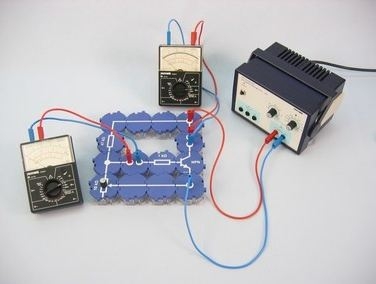Principle
The knowledge of the characteristics of a transistor is a prerequisite for a deeper understanding of the processes related to a transistor amplifying or switching stage. Of the four characteristics (the output, control, input and reverse voltage transfer ratio characteristics), the output and control characteristics are particularly important. This experiment is therefore limited to the recording of the characteristic curves for control and output. The other characteristic curves can be determined by slightly altering the experimental setup.
We recommend some class time to be spent after the experiment going over the characteristic curves that the students recorded. The operating lines graphed in the output characteristic field can be used to deepen their understanding of the control process. For example, you can explain voltage gain as a function of load resistance, the oppositional nature of output and input voltage, the output power achievable, and the influence of the position of the operating point on signal clippings.
Benefits
- No additional cable connections between the building blocks needed - clear arragned and quick setup
- Contact saftey due to puzzle blocks system
- Corrosion-free gold plated contacts
- Doubled earning sucess: Electric circuit diagram on top, real components can be seen unterside
Tasks
How does the collector current of a transistor depend on the base current and collector voltage?
Examine the dependence of the collector current of an npn transistor on the base current at various collector voltages.


